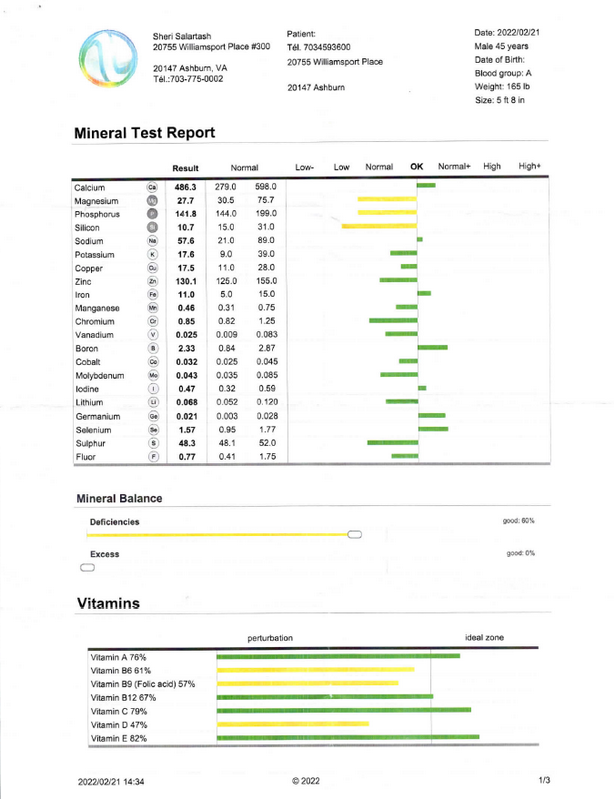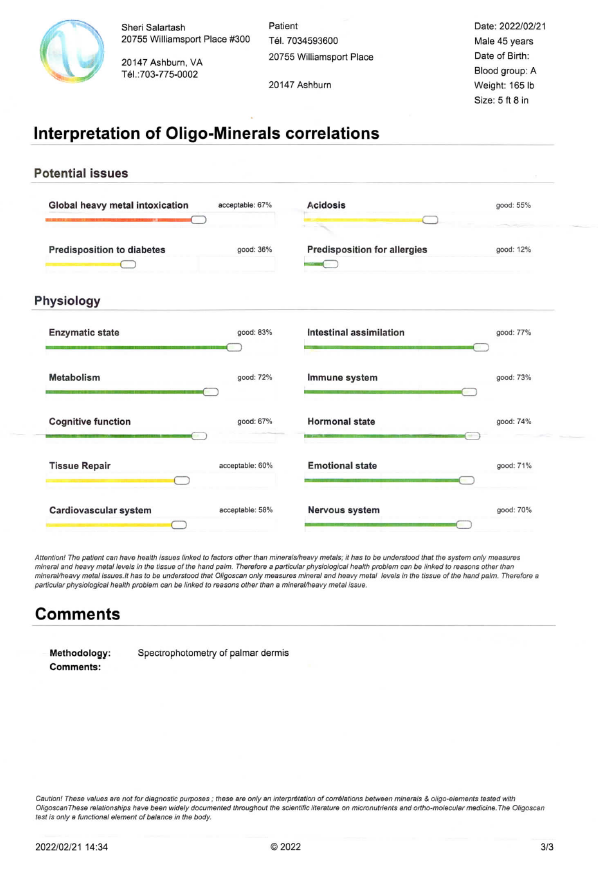
Human body needs lots of water and minerals to functions properly, and needs detaxation from heavy and toxic metals for better health control. OligoScan test developed and used in Europe can determine the presence and levels of 20 minerals and 14 heavy metals inside the cells through spectrophotometry; which utilizes light to measure the density of elements inside a substance or membrane. OligoScan shows 3-dimensional view of the minerals available in your body, as well as the heavy metal toxicity. Screening of physiological imbalances help better health control.

Minerals
Excess and deficiency in minerals
Toxic metals
A risk of toxic metals poisoning
Oxidative stress
Responsible for aging and numerous other diseases
OligoScan is an advanced device that allows doctors to test patients for mineral imbalances and heavy metals. It is an innovative test that uses spectrophotometry to send light through the tissue measuring the real-time levels of trace elements, minerals, and heavy metals in the body. The test itself takes only a few minutes and involves a quick scan of your hand. Results are IMMEDIATE!
| Heavy Metals | Toxic Metals |
| Calcium | Aluminum |
| Magnesium | Antimony |
| Phosphorus | Silver |
| Silicon | Arsenic |
| Sodium | Baryum |
| Potassium | Beryllium |
| Copper | Bismuth |
| Zinc | Cadmium |
| Manganese | Mercury |
| Chromium | Nickel |
| Vanadium | Platinum |
| Boron | Lead |
| Cobalt | Thallium |
| Molybdenum | Thorium |
| Iodine | |
| Lithium | |
| Germanium | |
| Selenium | |
| Sulfur |
PATIENT SAMPLE REPORT



Blood tests measure circulating levels of minerals and metals, while urine and hair tests measure what the body is excreting. The Oligoscan is unique in that it measures the levels of minerals and metals inside your cells, specifically in the peripheral tissue of one’s hand, 4mm in depth.
For example, a urine test for heavy metals showed high levels of lead and mercury. A chelating agent, which binds to heavy metals was used. Different chelating agents are more selective for specific metals. In this case, the test results showered higher lead in the urine because of the chelating agent used. The Oligoscan showed both of these metals high in the tissues with mercury levels more elevated than levels of lead. The Oligoscan provides a more accurate picture of what was occurring in the tissues, indicating that the mercury was more of a problem than the lead levels.
Another example is seen in someone with high calcium in their hair analysis. On the Oligoscan, the same patient may show a deficiency of intracellular calcium as they are not utilizing their calcium.